Bring your sense of adventure when you set out on an Arizona state park expedition. You will find plateaus, rugged mountains, deserts, and of course, the magnificent Grand Canyon. Arizona’s allure continues to entice families and retirees to relocate here. In the last decade, the population has soared by 11.9 percent – about seven million people.
Whether you plan to live in Arizona or make it a vacation getaway, you will be lost in wonder as you gaze upon the vibrantly colored rock formations. We have compiled a list of the top 10 state parks to get you started.
1. Catalina State Park
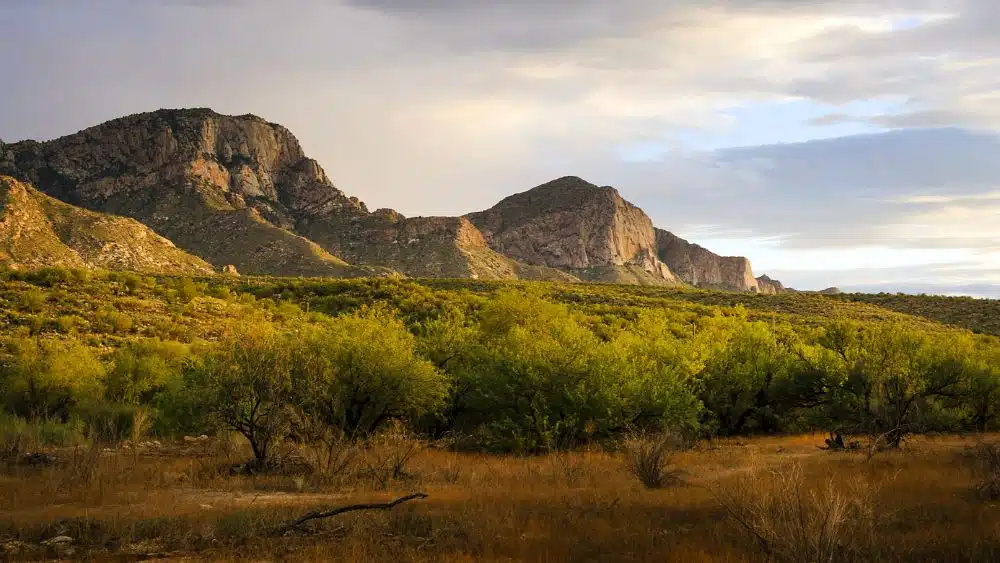
Google Rating 4.8
Catalina State Park, seven miles north of Tucson, sits snugly at the base of the Santa Catalina Mountains. The park is dedicated to preserving the rich desert landscape. Birdwatchers will be mesmerized by the 150 various bird species in this 5,500-acre park. Facilities include a 120-site campground with grills and picnic tables, along with an equestrian center and staging area for trail rides. Leashed dogs are welcome at Catalina.
2. Lake Havasu State Park
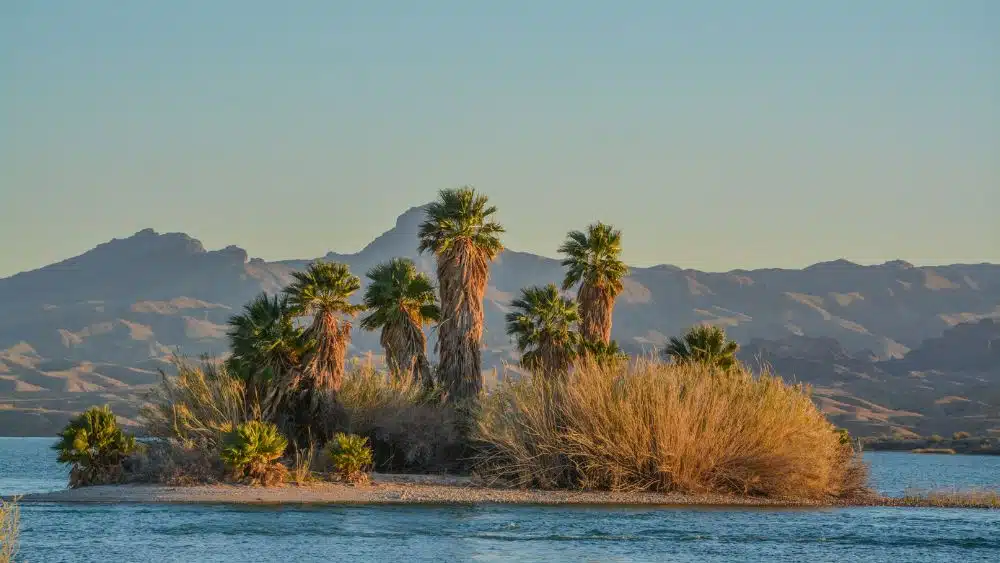
Google Rating 4.6
Lake Havasu State Park has been affectionately called the crowning jewel of Lake Havasu City. The lake, with 400 miles of coastline, is a desert oasis for those who love water sports, whether it’s swimming, boating, or fishing. The water is also teeming with striped bass and catfish. If you want to stay awhile, make a reservation at one of their 54 campsites. Pets are allowed but must be kept on a leash no longer than six feet.
3. Slide Rock State Park
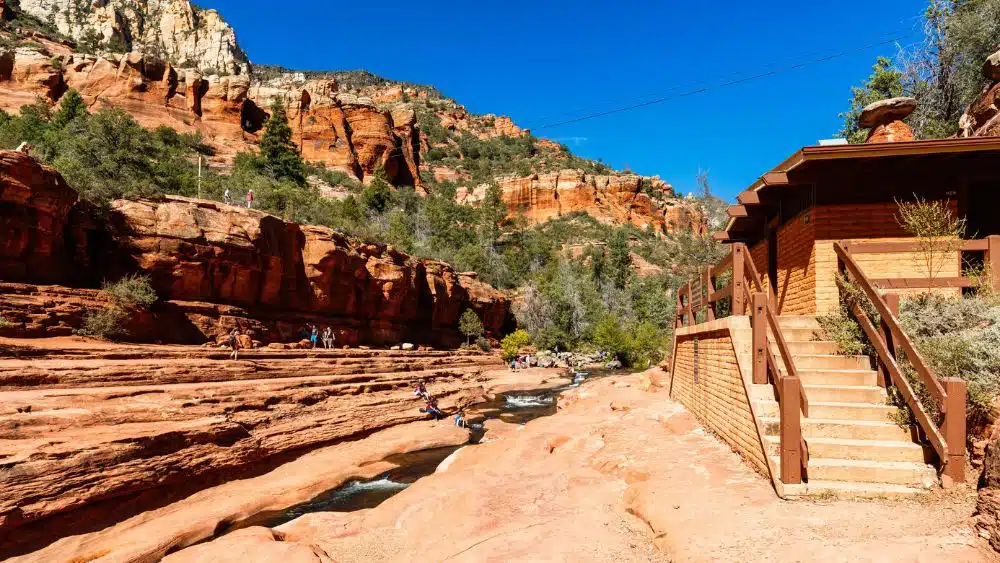
Google Rating 4.7
Slide Rock State Park is the brainchild of a 1907 homesteader. He ingeniously created an irrigation system so he could plant an apple orchard, which today encompasses 43 acres. Slide Rock State Park is billed as a fun destination for the entire family; visitors can wade, swim, or slither down the 80-foot-long natural rockslide. A word of caution: It can be extremely slippery. For a memorable day of outdoor adventures, head 120 miles north of Phoenix to Slide Rock State Park (and don’t forget to bring your pup!).
4. Lost Dutchman State Park
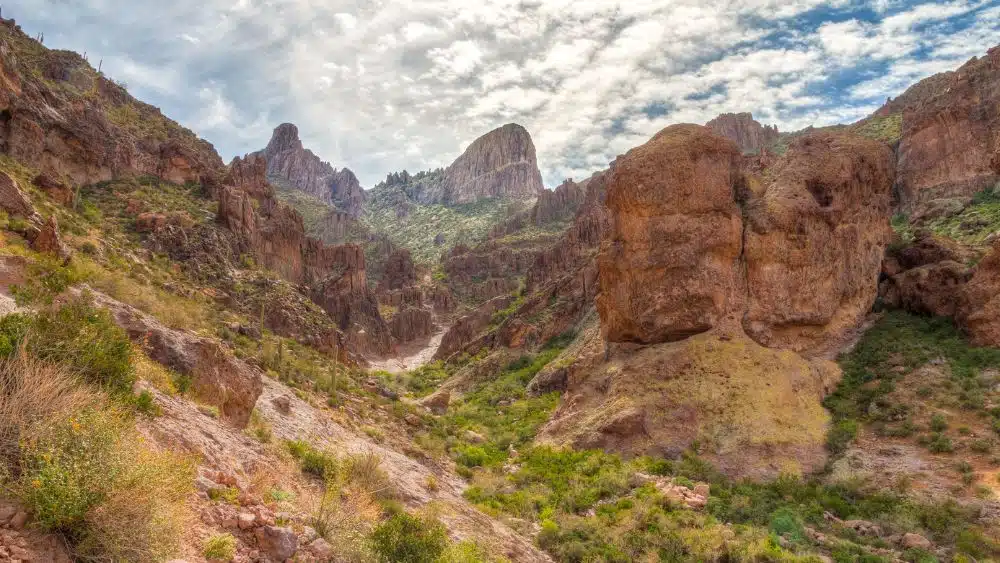
Google Rating 4.7
Forty miles east of Phoenix in the Sonoran Desert, Lost Dutchman State Park gets its name from a legendary lost gold mine. If you dare, hike into the Superstition Wilderness and climb the steep Siphon Draw Trail to the Flatiron of Superstition Mountain. If that sounds a bit too frightening or strenuous, enjoy a relaxing picnic, or stroll along a nature trail to view wildlife. Guests can reserve one of the park’s 70 campsites where they can unwind and take pets for a walk.
5. Kartchner Caverns State Park
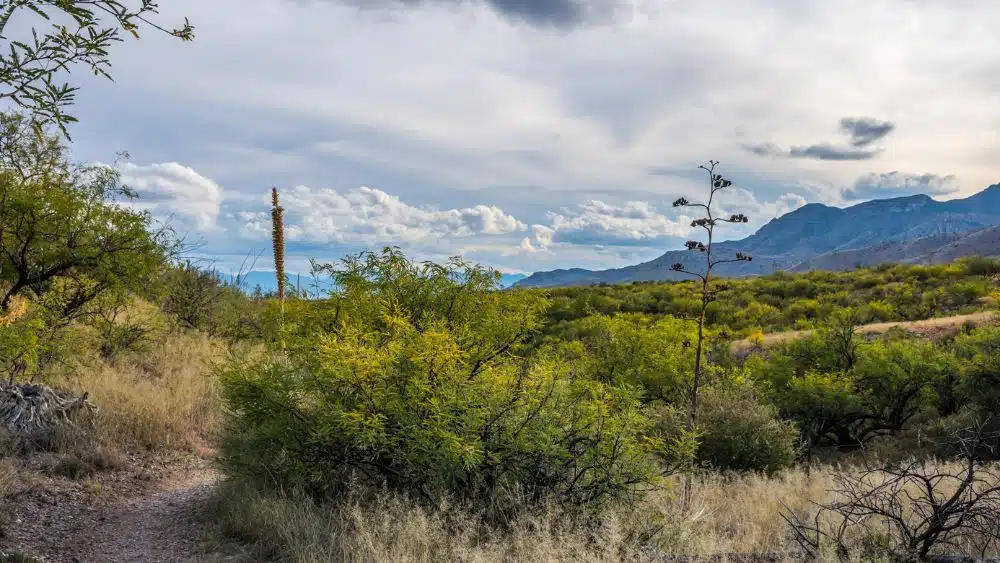
Google Rating 4.7
Welcome to the underworld: Kartchner Caverns State Park. The park, only 54 miles southeast of Tucson, gives an interactive presentation that whisks visitors back in time, describing the massive cave’s formation. The cave’s trail system was constructed to accommodate those with limited ability. After viewing the stalactite formations, you may want to hike along one of the park’s trails and admire the plants and wildlife. Leashed pets are welcome, except inside the cave or facility buildings.
6. Buckskin Mountain State Park
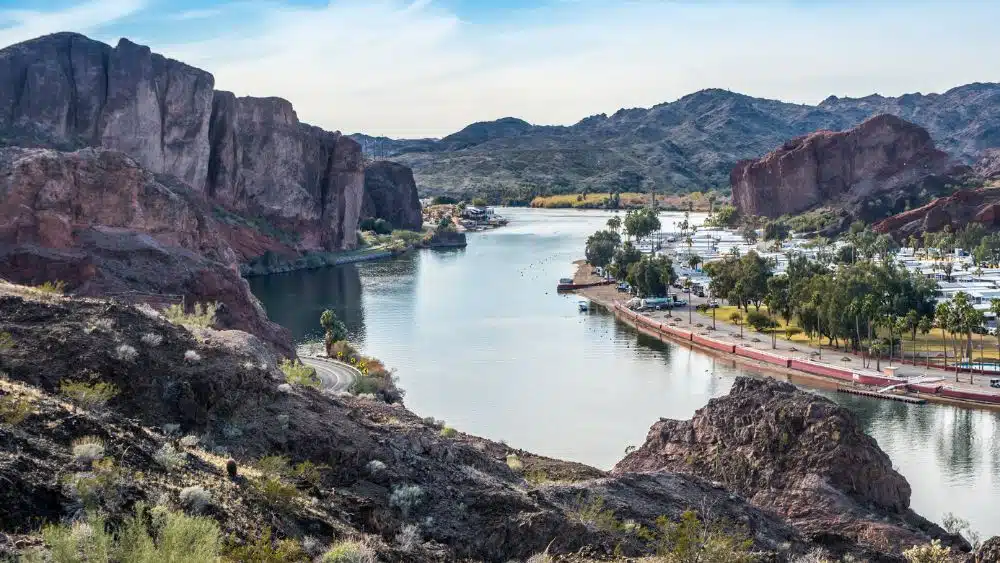
Google Rating 4.7
Buckskin Mountain State Park lies along the powerful Colorado River, 30 minutes south of Lake Havasu City. Visitors at this dog-friendly recreational area can explore miles of wilderness trails and then escape the heat by taking a refreshing dip in the river. Camping, fishing, boating, and swimming are available year-round. Fishing enthusiasts will enjoy the lake that abounds with bass, catfish, carp, sunfish, crappie, and bluegill. Remember to get your Arizona fishing license ahead of time – it’s required for everyone 10 years old and older.
7. Picacho Peak State Park
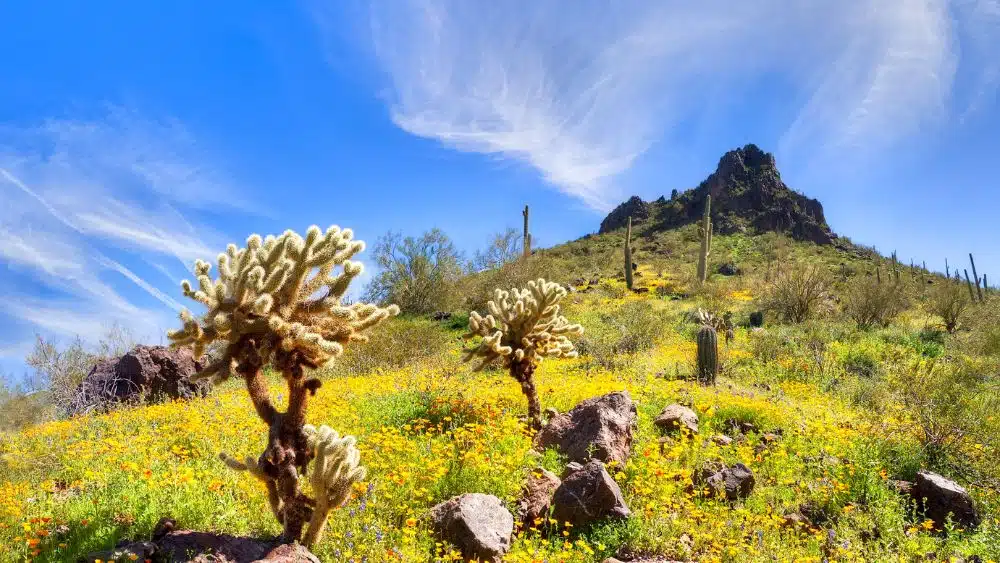
Google Rating 4.8
Travelers on I-10 between Phoenix and Tucson can easily spot Picacho Peak’s iconic 1500-foot summit. The spire was sculpted by thousands of years of volcanic flow. Visitors can select one of Picacho Peak State Park’s five nature trails to hike. To avoid the intense heat, you may want to visit the park between October and April. In February and March, nature puts on a display of its resplendent Mexican poppies. Leashed dogs are welcome everywhere except on the advanced trails.
8. Red Rock State Park
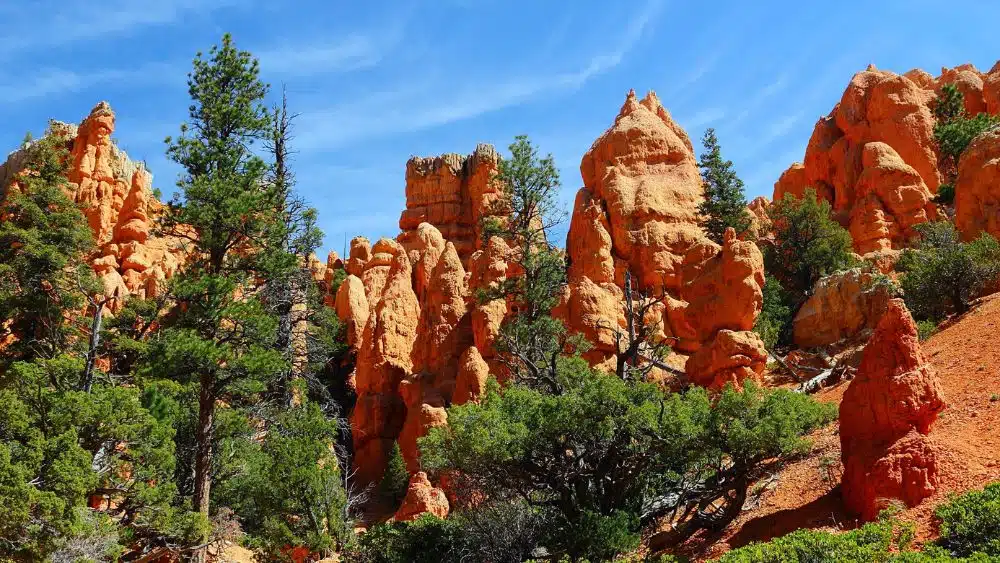
Google Rating 4.7
Red Rock State Park lies along the winding banks of Oak Creek, in the shadow of the majestic hills of Sedona. The 286-acre nature preserve boasts nature trails and canyons that are, you guessed it, rust-red. As you explore the park, you can expect to see plenty of rabbits, deer, and foxes. As a Center for Environmental Education, no pets are permitted. Camping is not available, as Red Rock State Park is a designated day-use area only.
9. Patagonia Lake State Park
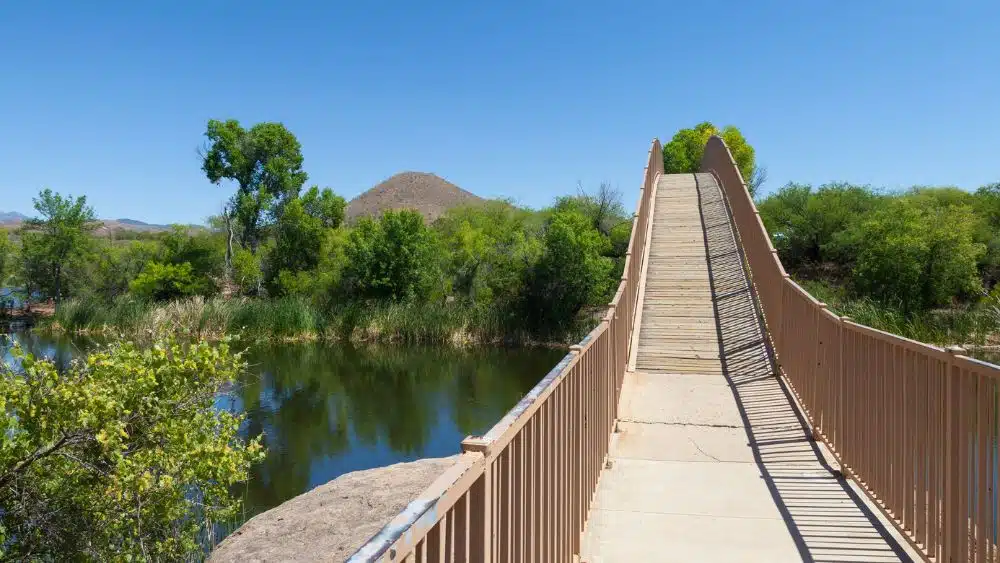
Google Rating 4.6
A little over an hour south of Tucson lies Patagonia Lake State Park. This lakeside gem is adjacent to a natural wildlife preserve that visitors can explore on horseback or foot. In addition to viewing wildlife like whitetail deer and blue herons, guests can enjoy fishing, swimming, canoeing, or boating. If you can’t get enough of Patagonia Lake State Park in one day, you can reserve a campsite. Leashed dogs are welcome.
10. Dead Horse Ranch State Park
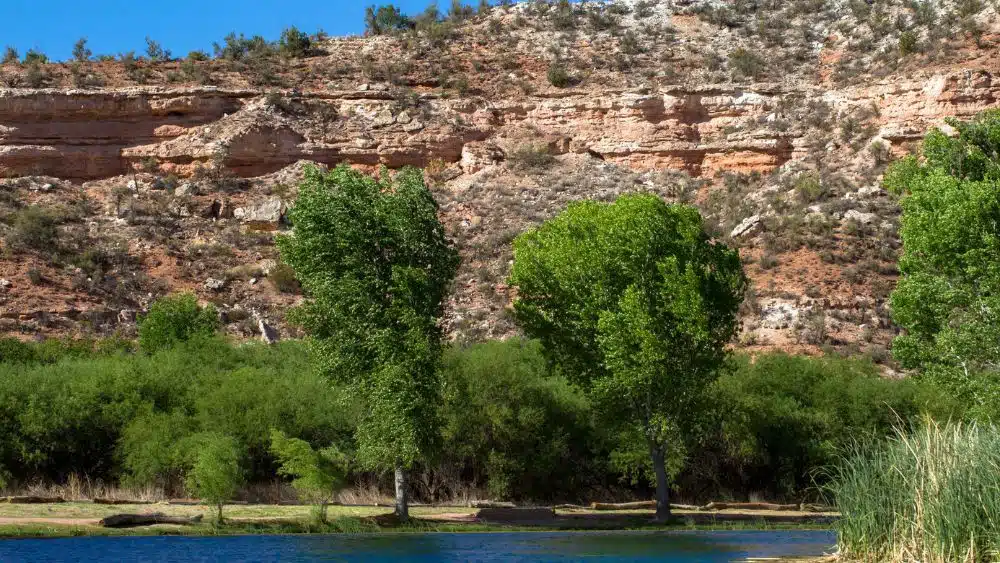
Google Rating 4.6
Don’t let the bizarre name steer you away from Dead Horse Ranch State Park, 100 miles north of Phoenix. Its 423 acres of rustic beauty attract horseback riders, kayakers, and backpackers. Its 3,300-foot elevation lifts you into a climate zone that’s ideal for camping and mountain biking. A throng of catfish, bluegill, rainbow trout, and bass fill the Verde River. Guests at the pet-friendly park can rent one of the eight one-room log cabins or choose a spacious campsite.
National Parks
Grand Canyon National Park
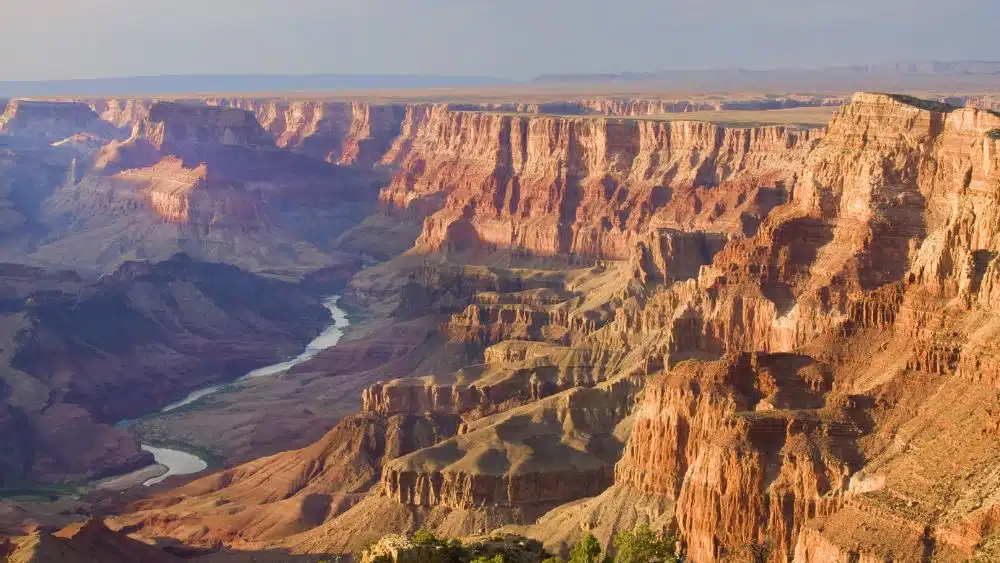
Google Rating 4.8
Words are inadequate to describe the incomparable views of the Grand Canyon National Park. The best vantage point is the South Rim, which stands 7,000 feet above sea level. Many have been enchanted by its beauty: Millions of tourists visit the park annually, making it one of the most popular destinations in the world.
Saguaro National Park
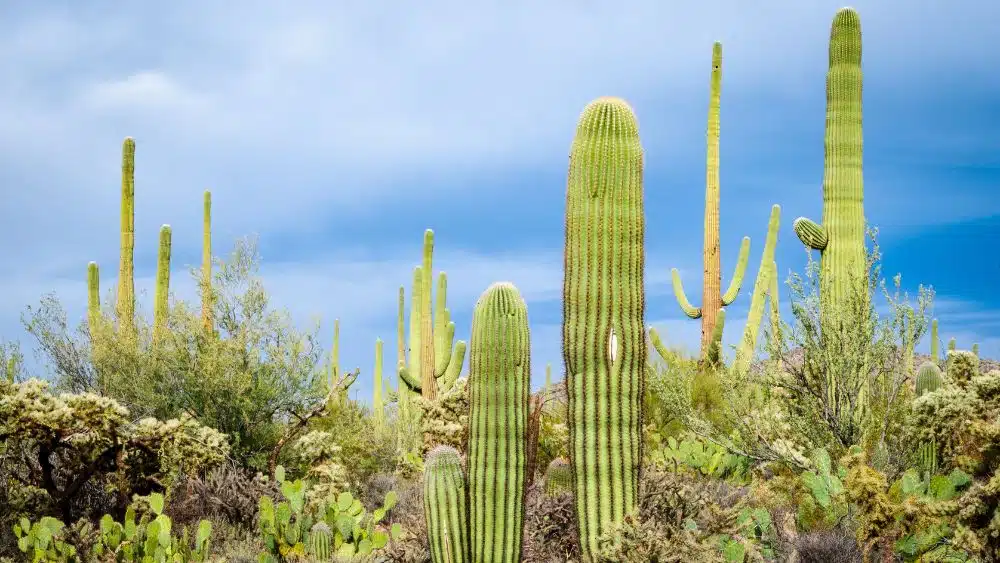
Google Rating 4.8
Saguaro National Park was named after the large saguaro cactus which can be seen throughout the park. A saguaro grows one to one and a half inches during the first eight years of its life (some of these regal beauties can rise 50 feet tall). And with their 150-175-year lifespan, they can easily outlive humans. In Saguaro National Park, you can backpack or take a scenic drive to view wildlife. Admission is $25 per vehicle and pets are welcome in the picnic areas but are not permitted on the unpaved trails.
All parks have been ranked based on the criteria of popularity, distance from the closest major cities, violent crime, property crime, Google ratings, and the number of Google reviews.

 Best Tiny Home Builders in Wisconsin
Best Tiny Home Builders in Wisconsin